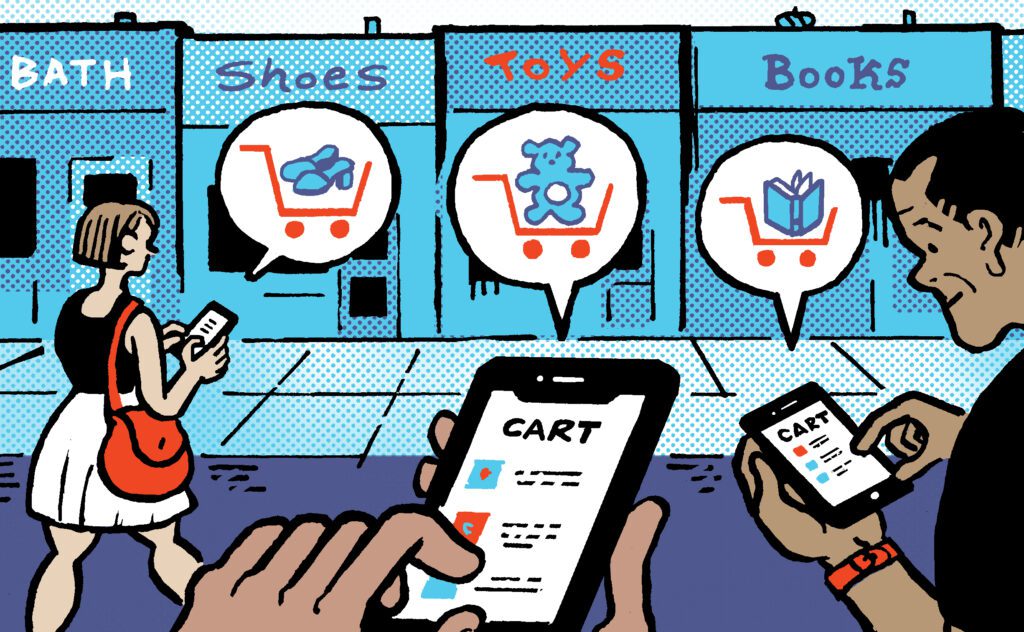Shopify Audiences, the ecommerce platform’s ad tech integration product, doubled its partner roster on Monday and announced new ad targeting and analytics features.
Shopify Audiences debuted last year with only Google and Meta. In January, Pinterest was added to the mix. Now TikTok, Snap and, notably, Criteo will be able to plug into Shopify for modeled data.
The introduction of Criteo to Shopify Audiences may not make waves, but it’s a potential big win for programmatic companies, if more independent ad tech partners follow suit.
“The open web is a huge untapped opportunity for Shopify merchants that’s often overlooked,” Shopify VP of product David Wurtz told AdExchanger.
The Shopportunity
Google and Meta were obvious starting points, with Pinterest, TikTok and Snapchat as similarly obvious next steps.
But there was no guarantee that Shopify would add a true programmatic partner to the Audiences product.
Shopify Audiences doesn’t take in or provide user-level data. It’s a data modeling hub that provides custom audiences that may be in market for a certain product based on Shopify’s view across its merchant base.
Which means that Shopify Audiences has less privacy exposure than other payment-based advertising products. The Walmart DSP on The Trade Desk, for instance, does true closed-loop attribution.
Shopify doesn’t do that, but Criteo’s addition shows that Shopify is comfortable adding third-party programmatic.
The “Why?” For Shopify
Shopify Audiences is part of the Shopify Plus package, a higher subscription tier for its ecommerce software. Shopify doesn’t earn part of the CPM and doesn’t get a share of sales or a high CPM tied to those sales, like retail media networks would.
The means Shopify Audiences isn’t necessarily a major revenue driver. Instead, it recoups value when Shopify adds merchants to the Plus tier. And greater merchant sales overall help, since Shopify gets a payment processing fee.
If Shopify wanted to crank up its Audience revenue, it could simply enter the media category and attach its data to the CPM. Meta would pay a lot to recreate its sales attribution network for ecommerce sellers – and Shopify is the only way to get there.
“There’s potentially an opportunity to monetize this directly, but we aren’t,” Wurtz said.
For Shopify, the value instead comes from getting more merchants over the hump to commercial viability, Wurtz said.
“A lot of the inventory on the open web is underappreciated and underpriced,” he said. With the addition of Criteo, Shopify can drive “a lot of volume” of ads to the web and improve customer acquisition costs for its merchants, just like the big social platforms have for particular brands or categories.
Shopify is also improving Audiences, he added. Along with the three new partners, Audiences just released Benchmarks, a new insights dashboard that gives advertisers directional information about where they’re spending more or less than similar brands.
As more merchants sign up, he said, the value of the data cooperative increases. And Shopify is getting better at targeting and delivering analytics back to the platforms.
Criteo’s Coup
While Shopify Audiences doesn’t enable closed-loop attribution for Criteo or any partners, it does have huge second-order benefits for the partner.
Meta, for instance, must love Shopify because Audiences enables modeled attribution – which is pretty sound when both companies have such strong first-party data sets – and doesn’t take a cut of the media or performance. Meta, on the other hand, does earn a cut of those sales it’s driving and is charging more for the improved targeting.
Criteo, likewise, has a huge growth opportunity with no Shopify rev share.
Aside from access to Shopify custom audiences, Criteo “can then show the power of our platform, which allows a Shopify merchant to think about things like onboarding their first-party data to our platform for retention or retargeting campaigns,” said Rory Mitchell, the company’s GM of global growth.
It’s a “natural progression,” he added, from the modeled approach to Criteo’s shopper graph products, which do use onboarded first-party data.
Shopify, he said, is focused on the value-add for Plus customers. “And we know how to get performance for these customers in a way that is really scalable across the open internet.”













